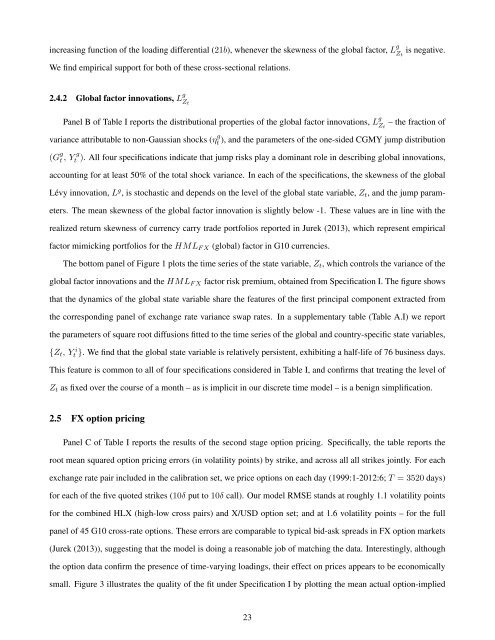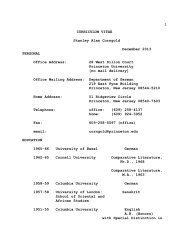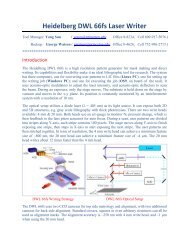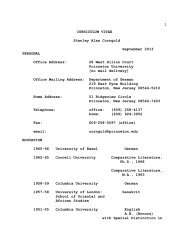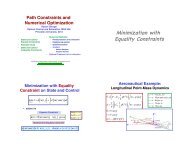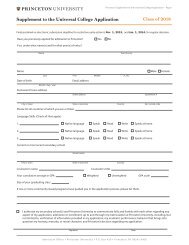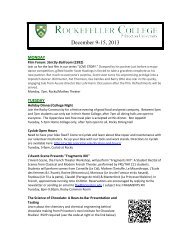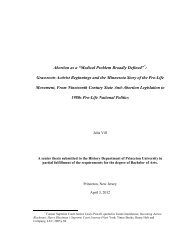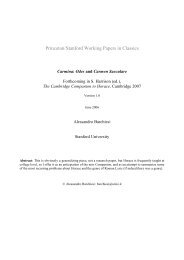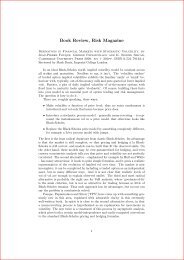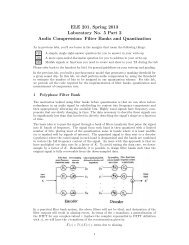Option-Implied Currency Risk Premia - Princeton University
Option-Implied Currency Risk Premia - Princeton University
Option-Implied Currency Risk Premia - Princeton University
You also want an ePaper? Increase the reach of your titles
YUMPU automatically turns print PDFs into web optimized ePapers that Google loves.
increasing function of the loading differential (21b), whenever the skewness of the global factor, L g Z t<br />
is negative.<br />
We find empirical support for both of these cross-sectional relations.<br />
2.4.2 Global factor innovations, L g Z t<br />
Panel B of Table I reports the distributional properties of the global factor innovations, L g Z t<br />
– the fraction of<br />
variance attributable to non-Gaussian shocks (η g t ), and the parameters of the one-sided CGMY jump distribution<br />
(G g t , Y g<br />
t ). All four specifications indicate that jump risks play a dominant role in describing global innovations,<br />
accounting for at least 50% of the total shock variance. In each of the specifications, the skewness of the global<br />
Lévy innovation, L g , is stochastic and depends on the level of the global state variable, Z t , and the jump parameters.<br />
The mean skewness of the global factor innovation is slightly below -1. These values are in line with the<br />
realized return skewness of currency carry trade portfolios reported in Jurek (2013), which represent empirical<br />
factor mimicking portfolios for the HML F X (global) factor in G10 currencies.<br />
The bottom panel of Figure 1 plots the time series of the state variable, Z t , which controls the variance of the<br />
global factor innovations and the HML F X factor risk premium, obtained from Specification I. The figure shows<br />
that the dynamics of the global state variable share the features of the first principal component extracted from<br />
the corresponding panel of exchange rate variance swap rates. In a supplementary table (Table A.I) we report<br />
the parameters of square root diffusions fitted to the time series of the global and country-specific state variables,<br />
{Z t , Y i<br />
t }. We find that the global state variable is relatively persistent, exhibiting a half-life of 76 business days.<br />
This feature is common to all of four specifications considered in Table I, and confirms that treating the level of<br />
Z t as fixed over the course of a month – as is implicit in our discrete time model – is a benign simplification.<br />
2.5 FX option pricing<br />
Panel C of Table I reports the results of the second stage option pricing. Specifically, the table reports the<br />
root mean squared option pricing errors (in volatility points) by strike, and across all all strikes jointly. For each<br />
exchange rate pair included in the calibration set, we price options on each day (1999:1-2012:6; T = 3520 days)<br />
for each of the five quoted strikes (10δ put to 10δ call). Our model RMSE stands at roughly 1.1 volatility points<br />
for the combined HLX (high-low cross pairs) and X/USD option set; and at 1.6 volatility points – for the full<br />
panel of 45 G10 cross-rate options. These errors are comparable to typical bid-ask spreads in FX option markets<br />
(Jurek (2013)), suggesting that the model is doing a reasonable job of matching the data. Interestingly, although<br />
the option data confirm the presence of time-varying loadings, their effect on prices appears to be economically<br />
small. Figure 3 illustrates the quality of the fit under Specification I by plotting the mean actual option-implied<br />
23


